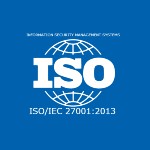How comprehensive due diligence drives better M&A decisions
Posted by | Fuld & Company
In today’s deal environment, speed is a factor—but certainty is an advantage. As competition for high-quality assets intensifies and risk factors multiply, M&A success depends not on the volume of diligence, but on its depth and precision.
Leading firms are rethinking how they approach due diligence in M&A, treating it not as a checklist, but as a strategic asset: a way to uncover hidden red flags, validate synergy assumptions, and test the true value of a deal before it’s signed.
Beyond the basics: types of due diligence that shape deal outcomes
While most acquirers focus on financial and legal diligence, the firms consistently executing successful integrations expand their lens. They incorporate a broader set of diligence tracks tailored to strategic risk and deal thesis validation, including:
- Commercial diligence: Assessing market dynamics, customer segments, channel health, and competitive positioning
- Operational diligence: Evaluating systems, supply chains, cost structures, and scalability
- Reputational diligence: Surfacing brand, ESG, or stakeholder issues that could create post-close disruption
- Technology diligence: Understanding IP, digital infrastructure, and technical debt
- Human capital diligence: Analyzing leadership fit, talent risk, and culture alignment
These insights allow acquirers to test assumptions embedded in the model—and proactively shape their integration plans.
Spotting the red flags that derail value
Comprehensive diligence isn’t just about confirming what’s known—it’s about identifying what hasn’t been disclosed, considered, or quantified. Red flags rarely live in the data room. They tend to surface in external perspectives, market movements, and operational blind spots.
Watch for:
- Overstated addressable market or unrealistic growth forecasts
- Customer concentration masked by channel complexity
- Vendor dependencies or key person risks that aren’t disclosed
- Reputational liabilities or litigation exposure hidden below the surface
- Hidden costs of integration due to cultural or operational mismatch
Effective risk assessment for mergers requires both a forensic and forward-looking view—evaluating not just the current state, but how the asset will perform in the hands of the acquirer.
Real-world example: market due diligence in action
A mid-market private equity firm focused on advertising and marketing was considering an investment in a digital advertising company serving the pet care industry. To evaluate the opportunity, the firm needed a deep understanding of the digital extension market, customer behavior trends, and the competitive environment.
Fuld & Company conducted comprehensive acquisition research to assess the target’s market positioning and long-term viability. The resulting due diligence report helped the firm validate market potential, identify risks, and confidently move forward with a majority investment. Within one year, the deal had generated a 2x return on invested capital.
This case demonstrates how rigorous, insight-led risk assessment for mergers doesn’t just safeguard against downside—it can accelerate value creation when paired with a clear investment thesis and robust intelligence.
Best practices for structuring high-impact M&A diligence
To turn diligence into a strategic capability, leading acquirers are applying four key practices:
- Align diligence tracks to deal thesis – Focus on what matters most to post-close success
- Incorporate external validation – Go beyond management-provided data to triangulate from customers, competitors, and partners
- Integrate insight into the model – Translate findings into assumptions that drive deal structure and integration planning
- Keep speed without sacrificing depth – Use modular frameworks and external support to compress timelines without losing insight
When diligence informs not just valuation, but negotiation and go-to-market planning, it becomes an enabler of growth—not just risk mitigation.
Learn how Fuld’s due diligence and M&A research helps dealmakers make more informed, defensible, and value-creating decisions.
Tags: Competitive Strategy, Mergers & Acquisition, Risk Management, Scenario Planning



















